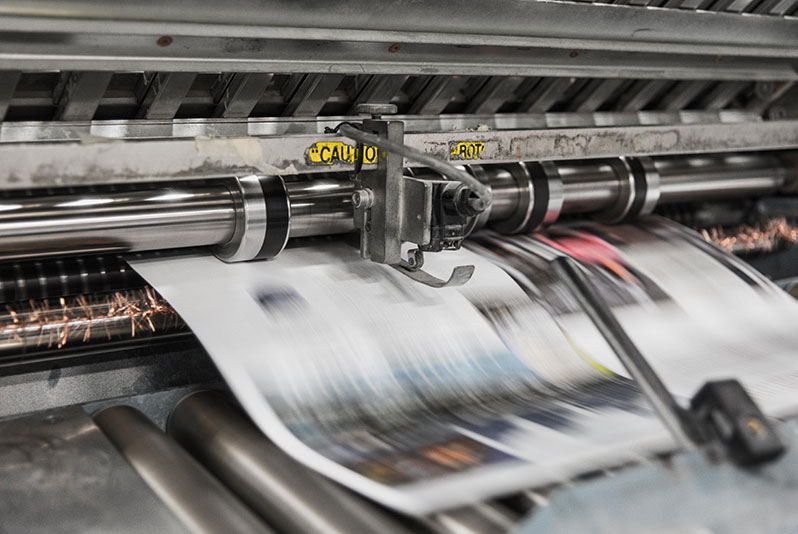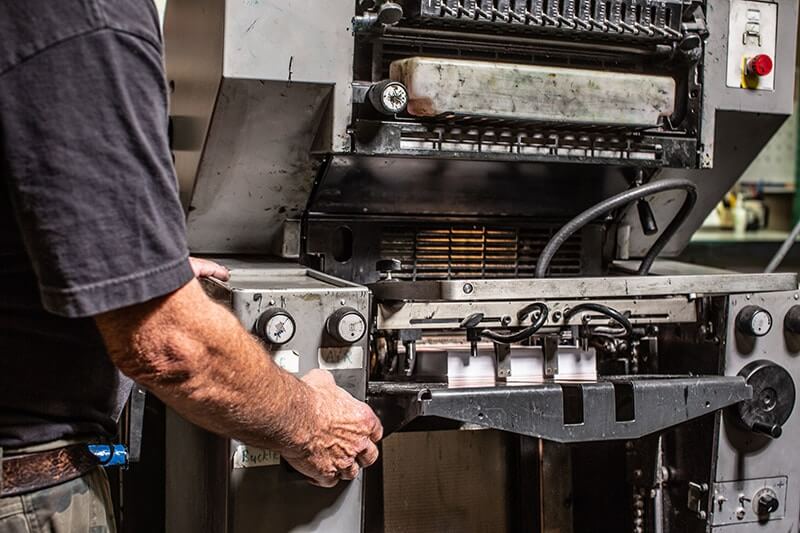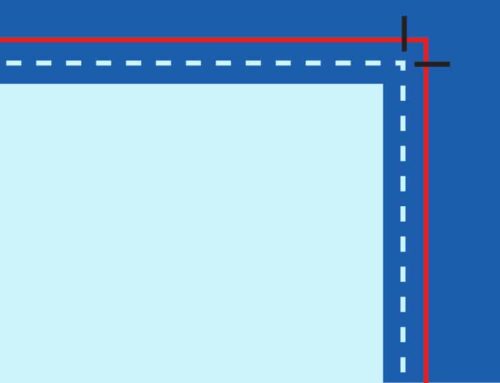Printing has a long history that was paramount for global development! Think about a world where the printing press wasn’t invented. How would humans get their incredible ideas onto something permanent, like paper, for the next generation? Or can you imagine if we never compiled any of our history? How would we ever learn about what happened in the past? What about medical advancements in our world?
Everyone can agree that the printing press was invaluable for human progression but how much do you know about how it was invented? You’ve probably heard of Gutenberg but there were a lot more people and events that made the printing process into what it is today.
What is a printing press?
In the simplest terms, a printing press is a piece of equipment that puts ink onto a medium like cloth or paper using pressure. Invented to accelerate the process of transferring ink to cloth using wooden blocks to create texts, the movable type printing press was developed in ancient China and Korea before moving through the West with the invention of Gutenberg’s press.
The History of the Printing Press
Woodblock printing was the first printing method where individual wooden letter blocks were pressed against paper to make impressions with ink. The first document using wood block printing is thought to be a Buddhist scripture dating back to 740 CE discovered in a Korean pagoda. Often, entire pages would be carved into a slab of wood backwards, covered in ink, and pressed to paper. Entire books were printed in this way! The second-oldest text is thought to be The Diamond Sutra printed in 868 A.D. during the Tang Dynasty.
In 1041, printing with a movable press with clay type that could be interchanged to make different words was invented by Bi Sheng in China. It was faster and more efficient for putting text onto a medium. The type blocks were put in a frame backwards, coated in ink, and pressed onto paper.
Next came wooden type and then metal type that was more durable and better to store. The earliest known text using movable type is thought to be the Korean Baegun Hwasang Chorok Buljo Jikji Simche Yojeo (“The Anthology of Great Buddhist Priests’ Zen Teachings”) from 1377.
While the origins of the printing press lie in East Asia, Johannes Gutenberg, a German goldsmith, is most commonly credited with the invention of the printing press and starting the European Printing Revolution. Gutenberg built his first printing press in Mainz, Germany in 1436 AD which was capable of printing pages at a much higher speed by using a reusable set of metal type, the screw press from a wine press to flatten sheets of paper and vellum, and ink he made himself out of linseed oil and soot that affixed better to metal rather than wood. His first client was the church and printing the Bible was essentially his first job becoming known as the Gutenberg Bible.
Gutenberg’s 15th-century printing methods were spread through the Western world and opened the door to the mass production of printed books for the first time in history. Book printing led to higher literacy rates for the lower and middle class and sharing information more broadly.
Gutenberg’s printing presses were built and set up in France, Italy, Spain, Portugal, and eventually England. Soon, printed books were not the only products of the printing press. Newspapers and pamphlets became essential modes of communication and the Renaissance in Europe took hold. In fact, the impact of the printing press and Gutenberg’s invention is said to have started many revolutions in the Western world including the Scientific Revolution, religious revolts like Luther’s protestant movement, the Industrial Revolution in the 18th century, and so much more!
A new steam-powered rotary press was then invented in the 19th century, replacing the hand-powered Gutenberg press, which allowed for printing at an industrial scale. Steam ran the machine without human intervention and the printing flatbed was replaced with rotary cylinders. German printer Friedrich Koenig and Thomas Bensley are credited with building and selling the first steam-powered printing presses.
Next came electronic offset printing at the end of the 20th century, and now computerized digital printing technology!
Modern Printing Presses | Digiprint Corporation
The printing industry has come a long way since ancient Chinese woodblock printing! Now we use fast, state of-the-art printers that print with clear, high-quality inks. We also have the capability to print in large formats and on a variety of mediums. Whether you are printing postcards or mailers, business cards, magazines, brochures, and more, we can help!
Our in-house printing professionals can provide you with design and our fast turn-around time ensures that you’ll have your printed marketing materials ready in no time! Give us a call and we’ll get started!






